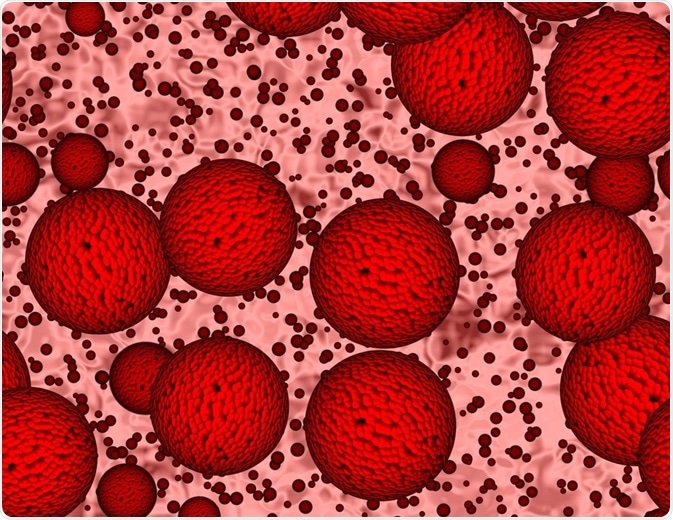In confocal Raman microscopy, a Raman spectrometer is coupled to a standard optical microscope, which leads to a high magnification of the sample and subsequent Raman analysis. Combining Raman spectroscopy with confocal microscopy allows optimal spatial filtering for sample volume analysis.
Skip to:
 Raimundo79 | Shutterstock
Raimundo79 | Shutterstock
Confocal Raman microscopy
In confocal Raman spectroscopy, it is possible to obtain signal spectrum form a single point on the sample. This signal spectrum can be transformed into detailed information regarding the chemical composition of the spot in the sample. Adding this modality to the confocal microscope, it is possible to detect structures that were not previously found, based in its spectral information.
The spectral information can be obtained by absorption, reflection, transmission, emission, photoluminescence, fluorescence or Raman spectroscopy. Among these other methods, Raman spectroscopy can provide specific information regarding the vibrational and rotational energies of the molecular bonds.
What is confocal microscopy?
The first confocal microscope was invented and patented by Marvin Minsky in 1957. He was interested in visualizing the human nervous system which was proving difficult in conventional microscopy due to out of focus light. As the whole sample was illuminated in wide-field microscopy, there was abundant scattered light associated with it.
The principle of confocal microscopy is based on limiting this out-of-focus light. Minsky postulated that this out-of-focus light can be limited by preventing it to enter the objective of the microscope. For this, he set up a pinhole in front of the light source. This led to only limited light entering the objective and most of the scattered light is removed. Another pinhole eliminates the image information that is out-of-focus. This stray light is limited without affecting the sample brightness.
What is Raman spectroscopy?
Raman spectroscopy is based on the principle of Raman scattering. When incident light is falls on a sample, it leads to scattering of light in an elastic manner. Apart from the elastic scattering, there is also a percentage of light scattered in an inelastic manner. This is called Raman scattering, and can be further divided into Stokes and anti-Stokes scattering. Using Raman spectroscopy, information can be obtained about the molecular vibrations and structure of a sample.
What are the advantages of Raman confocal microscopy?
Raman spectroscopy is a good probe to determine the vibrational energies of a molecule. Also, it can be used to excite a selective region of the sample by changing the wavelength of the excitation light. Additionally, this method does not require extensive sample preparation methods and the method is non-destructive - i.e. the sample is not destroyed in the process.
The water bands are also small and easily subtracted. Raman spectroscopy comprises characteristic bands that are specific to specific molecular signatures of the sample. The intensity of the band is also proportional to the concentration of the molecules that are being detected. Thus, this method can also be used for quantitative analysis.
For biological samples, the Raman spectra can provide detailed information regarding the constituents, which can, in turn, provide sufficient data for quantitative analysis and for distinguishing between different similar materials.
The recently developed Raman confocal microscopes are also being designed such that they are easily customizable, which helps in giving the best results in terms of differentiation of chemicals and sensitivity. For example, the Princeton system consists of a confocal microscope coupled to a multi-channel detector that can handle a range of excitation wavelengths and tunable lasers.
Broad application potential
The applications of this system range from multiple areas of industry to academic research, including nanoscience (such as molecular electronics, nanotubes, nanosensors, nanowires), material science (such as phase segregation systems), and catalysis (such as single-site catalysts).
Sources
- Princeton Instruments. Confocal Raman Microscopy General Overview. Confocal-raman-note.pdf.
- M. Minsky. (1988). Scanning. V.10, pp128-138, 1988.
- HORIBA. The meaning of confocal Raman microscopy. horiba.com.
- Palsson, M. (2003). Raman Spectroscopy and Confocal Raman Imaging. Lund Reports on Atomic Physics. publication/2260788.
Further Reading
Last Updated: May 22, 2019